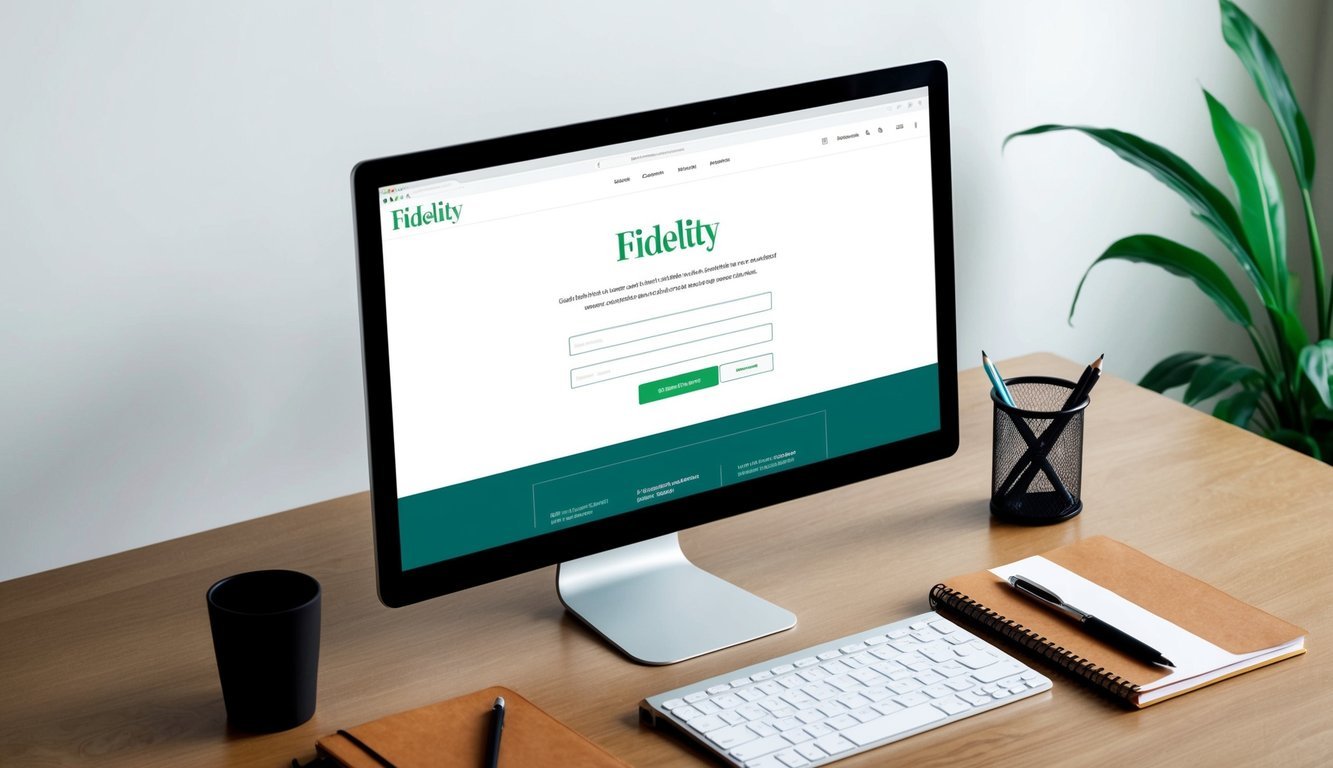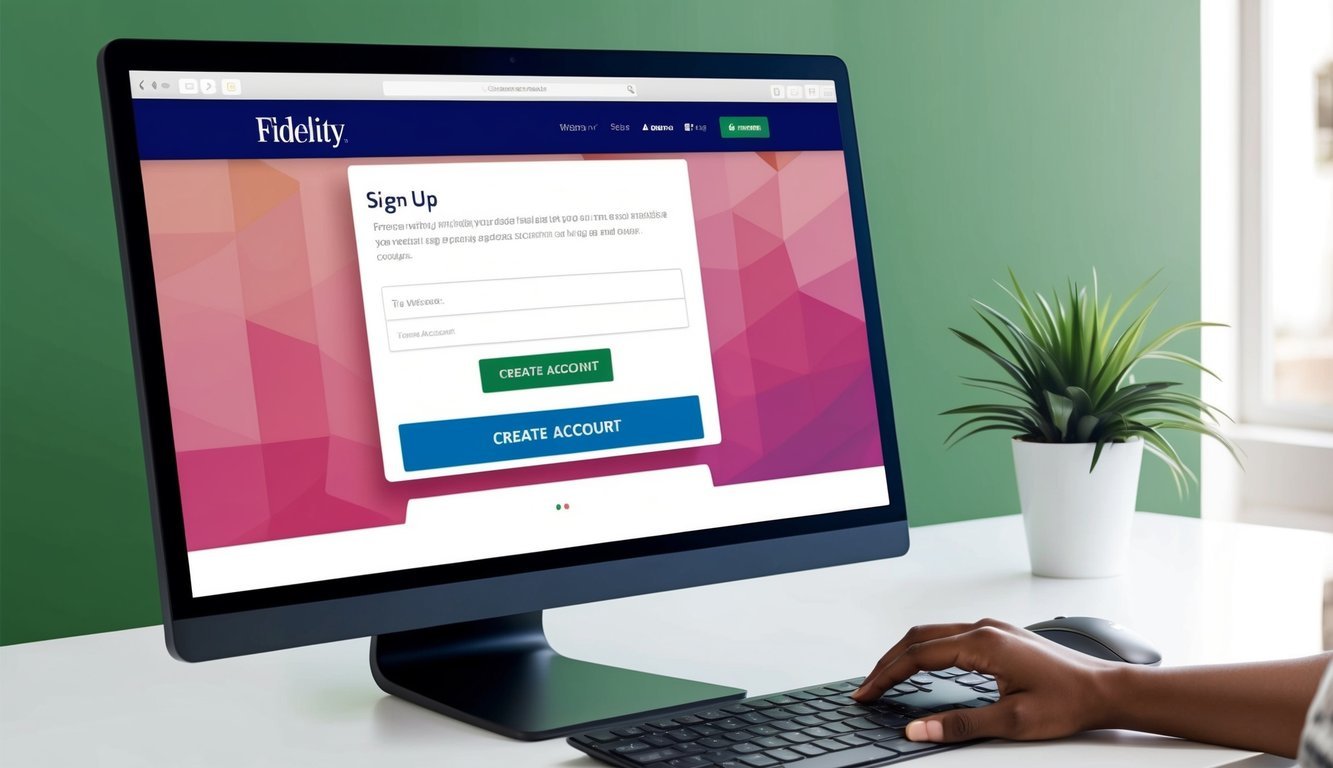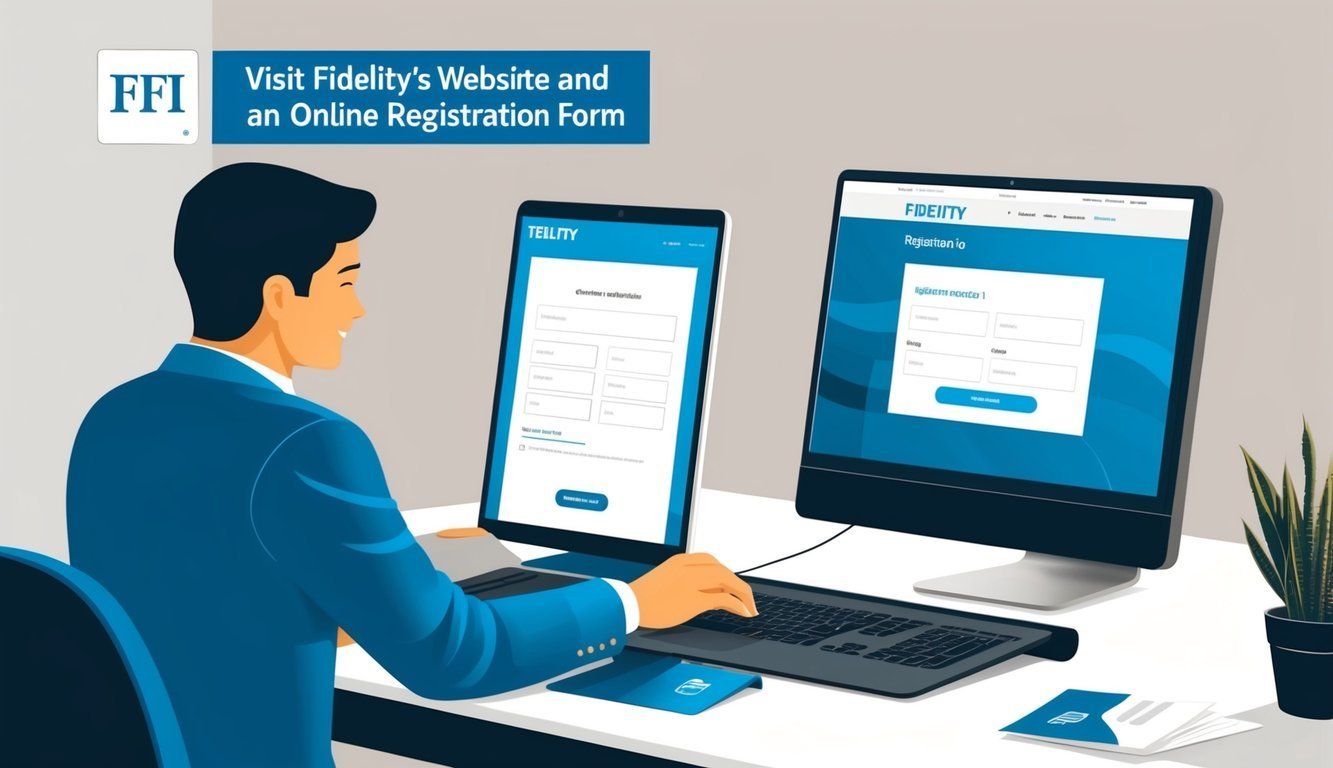Starting your investment journey can stir up excitement and a bit of anxiety, can’t it? Many new investors find themselves turning to Fidelity, and for good reason. Opening a Fidelity account is straightforward and you can do it online in just a few quick steps.
Fidelity has a range of account types tailored to different financial goals.
Want to get into general investing? A standard brokerage account could be your best friend.
If you’re eyeing your retirement, there are IRAs at your disposal.
The best part? You don’t need a fortune to kick things off.
Once you’ve got your account set up, you’ll dive into a wide array of investment options.
Fidelity provides handy tools and resources to help you make smart decisions about your investments.
Whether you’re a total newbie or you’ve dabbled a bit before, Fidelity’s got your back on this financial journey.
Key Takeaways
- Fidelity offers various account types for all sorts of investment needs.
- The sign-up process is fast and can be done online.
- Fidelity equips you with tools and resources to guide your investment choices.
Setting Up Your Fidelity Account

Getting started with Fidelity is a breeze! First off, you’ll choose the account type that best fits your goals, then fill out a simple application with some basic info.
Let’s break it down: pick your account type, share your Social Security number and a few details about your job, and you’re on your way.
Once your account is approved, it’s time to fund it and dive into stocks, ETFs, or mutual funds.
Curious about TD Ameritrade? You can check out their site for a similar step-by-step guide.
Choose Your Investment Path
Before you open a Fidelity account, it’s crucial to clarify your investment goals.
Are you gearing up for retirement, or just looking to get your feet wet with investing? This call will help shape your next steps.
After you’ve figured out your goals, selecting the appropriate account type, like an IRA or a regular brokerage account, becomes a breeze.
If you’re feeling adventurous, don’t forget to look into 401(k) options that your employer might offer.
Thinking about retirement? An IRA could be your best bet.
If you’re into general investing, a brokerage account might serve you better.
With Fidelity, both account types can be opened with zero minimum deposit.
Once you’ve picked, you’ll share personal details like your name, address, and Social Security number.
Trust me, they need this info to comply with regulations and keep your account secure.
Next up, it’s time to create a username and password.
Make it strong but memorable! And guess what? Fidelity might ask for a PIN for some extra security when you log in later.
Understanding Account Types
Fidelity’s got you covered with a variety of account options to suit your needs.
The Fidelity brokerage account is excellent for trading stocks, mutual funds, and ETFs, plus it’s flexible with no fees to open or maintain.
If you need something for everyday expenses, take a look at the Fidelity cash management account.
It works much like a checking account, but let’s you dip your toes into investing.
You can use it for both spending and saving—pretty convenient, right?
For retirement savings, Fidelity offers some IRA options.
These accounts come with tax benefits that’ll help set you up for the future.
You can choose between a traditional IRA and a Roth IRA based on your tax situation.
Each account type has its own rules when it comes to deposits, withdrawals, and taxes, so be sure to read the fine print before you commit.
Don’t worry, Fidelity has plenty of resources on its website to guide your decision.
Once Your Account’s Active

With your Fidelity account up and running, you can start exploring investment options and making use of all the nifty features available to you.
Fidelity has plenty of ways to help grow your money and manage your finances.
Explore Investment Options
Fidelity offers a buffet of investment choices.
You can buy stocks on the NYSE or invest in various mutual funds.
Many funds even have zero account minimums, which is excellent news for new investors.
Before you dive in, make sure to check out each option’s risks and fees.
Mutual funds come with charges and expenses that can eat into your returns.
Always read the prospectus—you wouldn’t want to buy a car without checking under the hood, right?
If you prefer a bit more stability, Fidelity offers interest-bearing accounts and money market funds that usually carry lower risks but may offer lower returns compared to stocks.
Remember, every investment carries some level of risk.
Even the “safer” options aren’t immune to market fluctuations.
Your SIPC coverage protects your account if Fidelity were to face a hiccup, but it won’t cover any investment losses.
Maximizing Account Features
One of the cool things about Fidelity accounts is the wealth of tools at your fingertips.
Many don’t come with account fees, saving you some change.
You can trade stocks, bonds, or even venture into options trading if you’re feeling bold.
Just a heads-up, complex strategies like options trading can be risky and might not be for everyone.
If you’re curious, take it slow and learn the basics before diving deeper.
For those everyday banking needs, Fidelity’s cash management accounts work similarly to checking accounts and might even come with better perks, like ATM fee reimbursements.
Make sure your account is FDIC-insured for that extra bit of peace of mind.
This protects your cash in case something goes sideways, which is different from SIPC coverage that deals with investment protections.
Don’t overlook Fidelity’s research tools—they’re designed to help you make informed investment choices.
And if you’ve got questions, customer support is just a shout away.
Frequently Asked Questions
If you’re new to Fidelity, you might have some questions about setting up your account.
Let’s tackle some of the most common queries regarding the account setup process, requirements, minimum deposits, and customer service options.
Can I open a Fidelity account online?
You bet! Opening a Fidelity account online is not only possible, but it’s quick and straightforward too.
Just head over to the Fidelity website and follow the easy steps to get your account rolling from the comfort of your home.
What do I need to set up a Fidelity account?
To set up an account, you’ll need a few essentials: a valid U.S. Social Security number or Tax Identification Number (TIN).
Also, it’s important to be a U.S. resident for most accounts.
Easy peasy!
Is there a minimum amount required to start investing with Fidelity?
Great news! Fidelity doesn’t impose a minimum deposit for many of its accounts.
They even offer zero account minimums for retail brokerage accounts, which is perfect for beginners just starting out.
How do I get in touch with Fidelity customer service during the sign-up process?
Fidelity makes it easy to reach their customer service.
You can contact them by phone or online.
Plus, there’s a comprehensive FAQ section on their site that answers common questions.
What types of accounts are available for beginners at Fidelity?
There’s a nice variety of accounts suitable for beginners at Fidelity.
Some great options include individual brokerage accounts and cash management accounts that combine investing with everyday cash needs.
The Fidelity Cash Management account is designed just for that—meticulously blending spending and investing for new investors.
Are there any fees associated with opening a new Fidelity account?
Most importantly, many Fidelity accounts come with zero account fees.
This applies particularly to their retail brokerage accounts, which is a great bonus for those just getting started in the world of investing.

